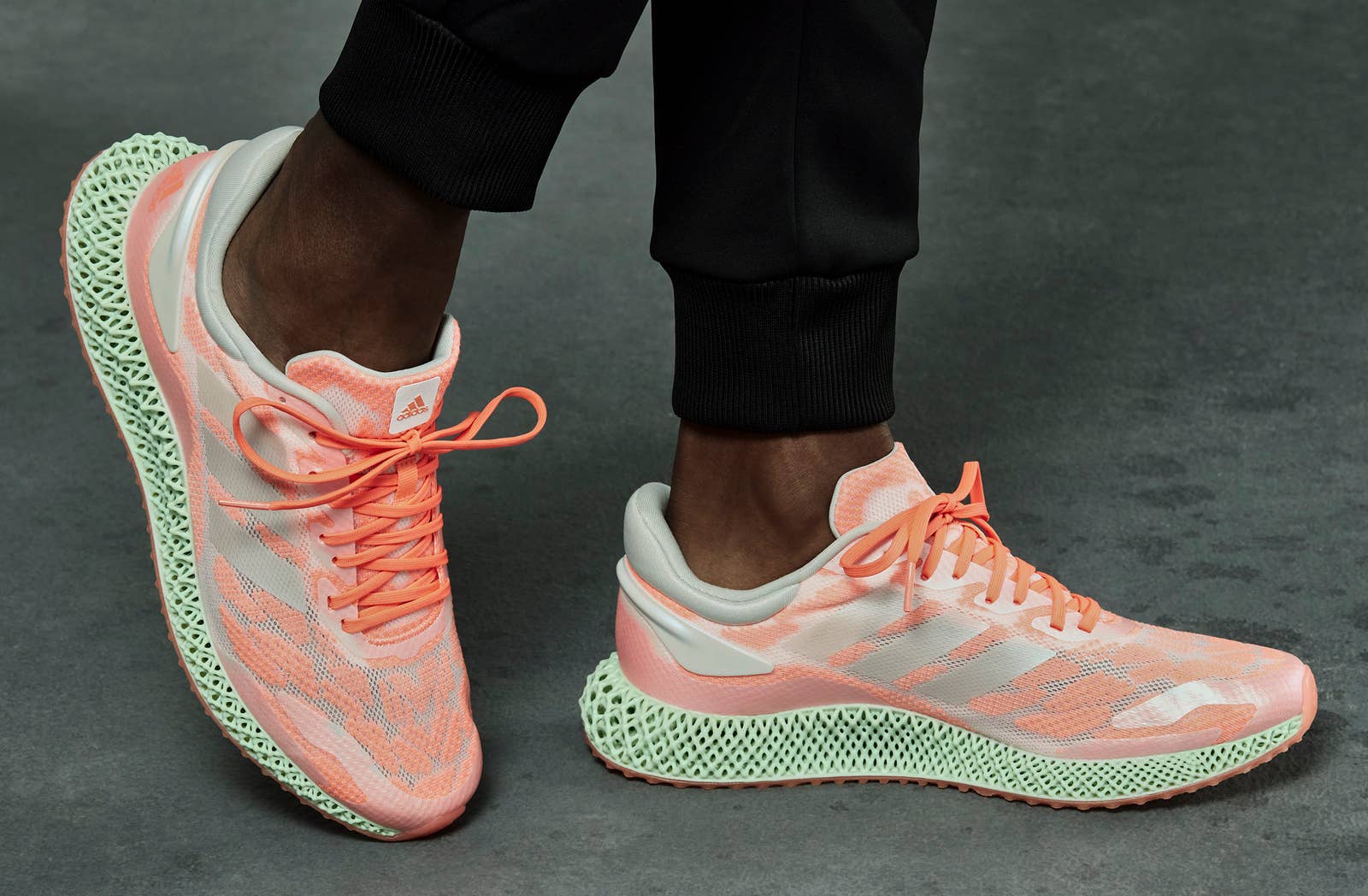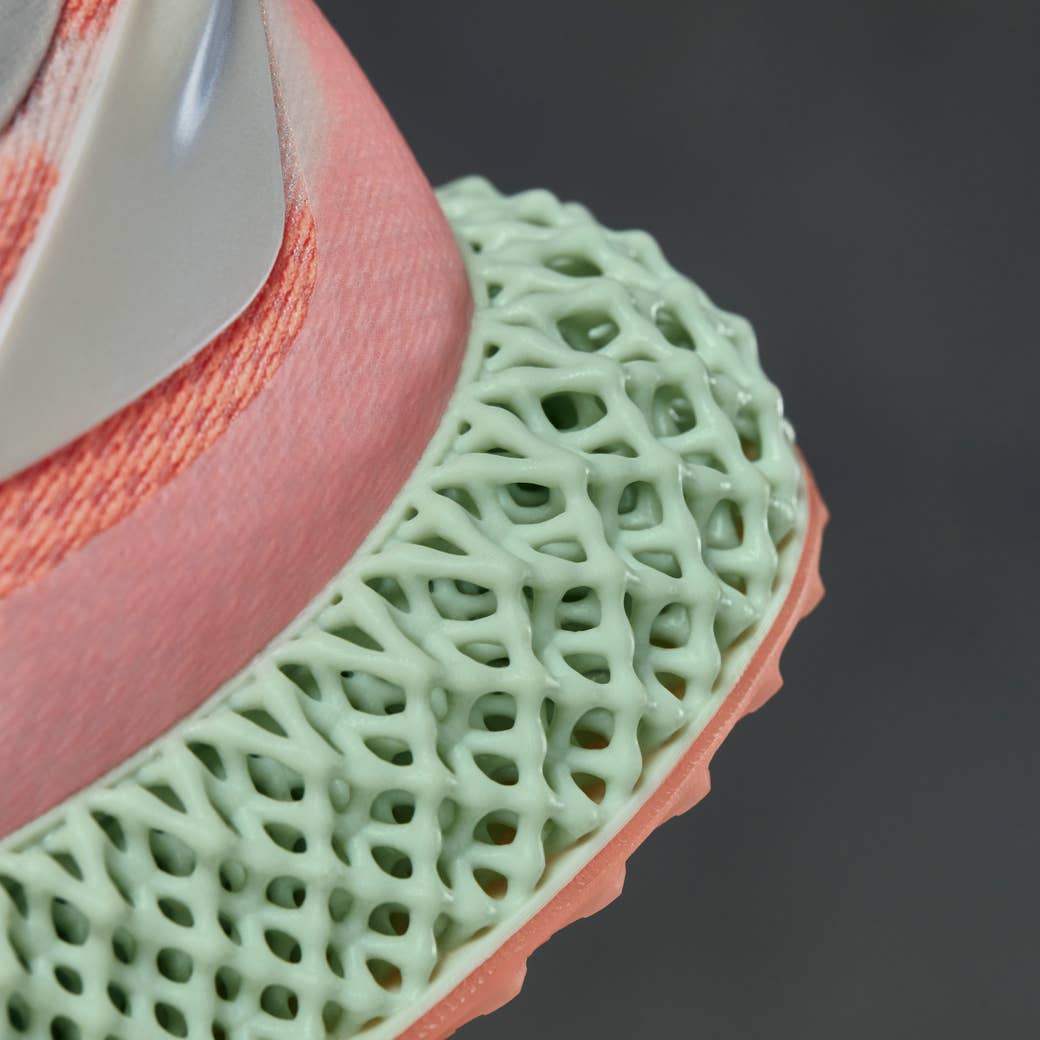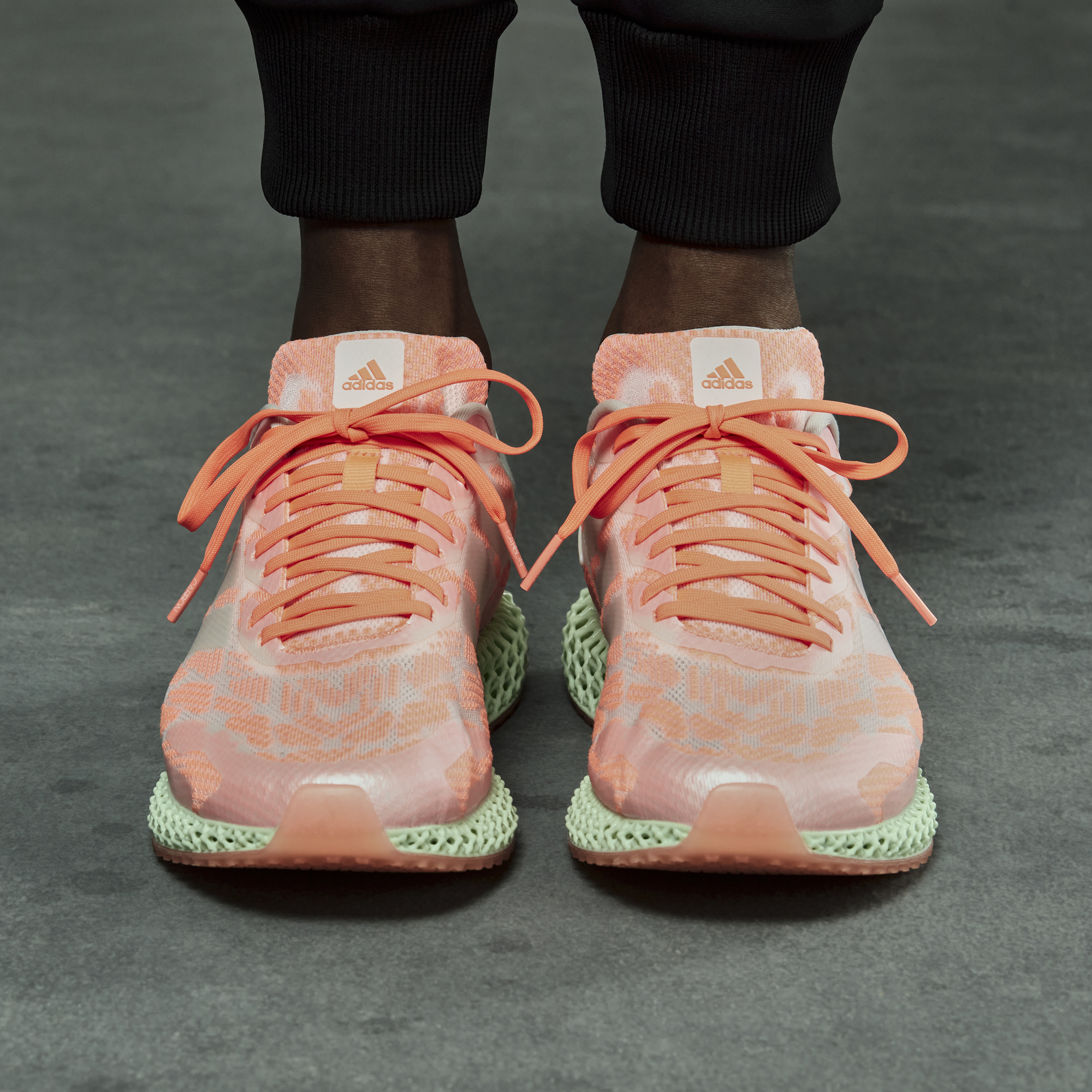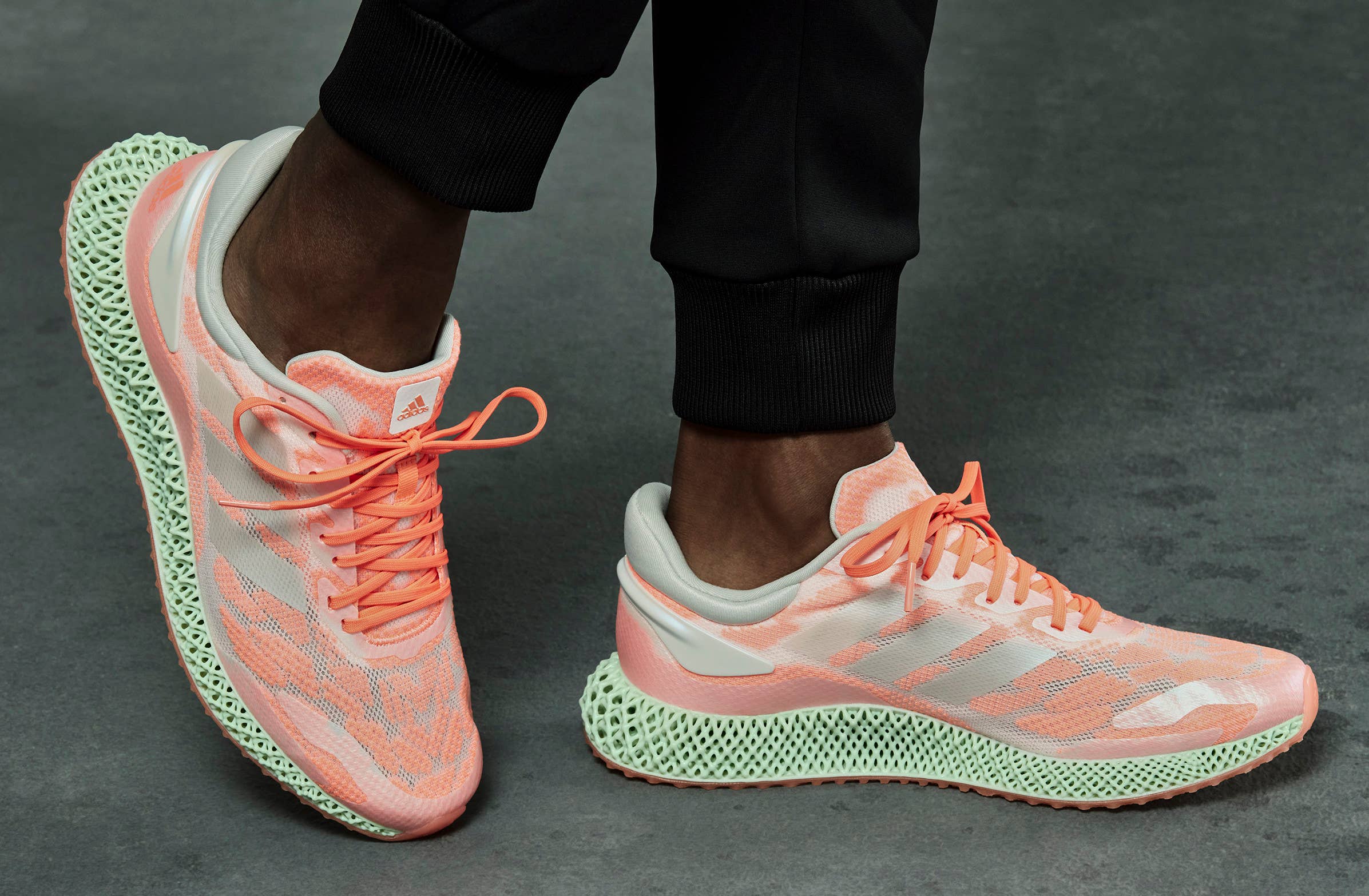
As the global sneaker game has exploded over the past few years, so too has the rate of technological innovation within it. So much so that these days, barely a week seems to pass before we're hearing about the latest – biggest! lightest! shiniest! – iteration to drop.
Not all technological innovations are born equal, of course, and when those 'Best Sneakers of the 2020s' lists finally come around, it's highly likely only a handful of today's hottest tech developments will have stood the test of time. One current technological trend that is almost certain to still be around, however, and all set to have a massive impact on the footwear game as a whole in the coming decade, is 3D printing.
While many brands have used 3D printing as a part of their manufacturing process for a while – mainly in the development of prototypes – we're now starting to see 3D printed elements increasingly appearing in the final products themselves. This is a shift that is likely to continue, and one that opens up enormous possibilities from a design perspective – not least the potential for totally personalised footwear at some point in the very near future.
adidas are a brand at the very forefront of 3D printing innovation. First dropping a shoe with a 3D printed midsole as a concept release from Futurecraft – their incubator for showcasing experimental and conceptual innovation – back in 2017, they have since been gradually ramping up their offering under the banner of adidas 4D.
While last season saw adidas taking 4D to the next level with a slew of releases, the brand is now introducing the 4D Run to kick off 2020 in a major way. Complex caught up with Marco Kormann, the brand's Director of Future Technology Innovation, to find out more on the story behind their groundbreaking 4D tech and their plans for it in future.
The latest 4D drops can be found across adidas.com, adidas_LDN Oxford St and select retailers now.

COMPLEX: Can you begin by introducing yourself and your role at adidas?
Marco Kormann: Sure. I'm Director of Future Technology Innovation here at adidas. I originally trained as a mechanical engineer, and have been with the company for 12 years now – the last eight in Germany as part of the Research and Development team. Our R&D team is where we are able to look into concepts that are five to seven years out before they might go into a commercial space.
So we have the luxury of looking into elements we think might become relevant from a technology perspective for our products – such as 3D printing. For the past eight years I have been basically one of the 'founding fathers' of 3D printing activity here at adidas – the results of which you're now seeing with 4D.
4D and the tech behind it are obviously very much future-facing, but can you take it back for a moment to explain how and why the brand first got interested in the idea of using 3D printing for footwear, and how this has evolved over time?
When we talk about the beginnings of 3D printing, we need to go back to the early 2000s. There was a process called Rapid Prototyping that allowed you to print parts of shoes. Every footwear company was using this process to print midsoles, outsoles, to put them on an upper, to see how they look, to see if we needed to redo it. But they were just prototypes, very fragile – you couldn't walk in them – and they couldn't be used in the final product.
Then in 2010, as 3D printing was evolving – the materials were getting better, the processes were getting faster, costs were going down, performance was going up – we figured out that the trend would be towards 3D printing elements that would be used in the actual final product. This also coincided with footwear industry trends at the time which were moving towards smaller runs, faster time to market, more flexibility in production, and we felt 3D printing could also address all of these.
The traditional process at the time was to create moulds for specific elements of the shoe, then to inject them with the materials to make that particular part. This took a lot of time, and because the moulds were expensive to make, we were obliged to create tens of thousands of parts from each one just to make them cost effective – whereas 3D printing could potentially allow us to print one-off elements on the go.
All of this told us that we needed to look into this technology seriously, as it would allow us to address some of the key questions that not only this company, but the whole industry will be facing in the future. So from 2010 we began experimenting a lot with different materials, machines, suppliers, processes. We produced tonnes of samples internally, and while they all helped us get one step closer to where we are today, none of it was really commercially viable.
Then in 2015 a new material process became available, called SLS (Selective Laser Sintering). This uses a powder, which is fused together using lasers to form the final part. We used this process to create our first 3D printed midsole, which we released as Futurecraft 3D.
So these were the first shoes adidas released to market with a 3D printed midsole?
Yes, and we sold 300 pairs of them, and lost money with every pair we sold. But that was OK, as we saw it more as a statement of intent from us as a brand, that we want to be active in this field, and to show our consumers what we were working on. Although this process – what we might now call the 'traditional' 3D printing process – was another big step forward, we realised after the release of the Futurecraft 3D that it was still too time-consuming – you have to create the plastic, then grind it down into a very fine powder, then add a lot of very expensive additives, and so on – and expensive to allow us to realise our goals.
So it was my key task, again, to scout for other technologies, other partners, that would allow us to 3D print parts not based on this existing technology, but in a new way. And this is when I came across Carbon, in late 2015. I saw a video, I think on LinkedIn, where the CEO of Carbon was explaining his technology. At that time they were still very much a start-up, maybe even just emerging from stealth mode, but I realised this technology might be what we were looking for.

So who are Carbon and what technology had they developed?
As I say, at that point they were just a start up, based in the US, and they had developed a new 3D printing process, called Digital Light Synthesis, where the material starts off as a liquid, is then essentially cured, or sculpted, by light, into complex geometric lattice structures, and then fixed using oxygen. It was a very new technology that had not really existed before.
Although there can be big risks involved when a huge business like adidas works with a smaller business, especially a start-up – when they're so new, and you don't know if they'll be able to scale up, for example – we realised that this technology was exactly what we had been looking for, so we officially entered into a collaboration with them, the first results of which were the launch of Futurecraft 4D in late 2016.
Can you explain what Futurecraft 4D is, and the thinking behind it?
Futurecraft is adidas' incubator for showcasing experimental and conceptual innovations. '4D' is the name we gave to the range that use this new 3D printed technology. We called it '4D' as we wanted to express that this was the next generation, the next step in 3D printing, not the 'traditional' way of how you 3D print parts, but advancing what state of the art 3D printing actually is. Also, '4D' as it expresses the 4th dimension, which represents the athlete data we're bringing to the product, so 3D printing plus this 4th dimension, which is uniquely adidas.
Watching the video showing the 4D process in action – with the midsole emerging from the liquid, fully formed – reminded me of that famous quote from Sci-Fi writer Arthur C Clarke, who said "any sufficiently advanced technology is indistinguishable from magic". It definitely looks like magic, but can you explain what is actually going on?
So the material we start with is a liquid, called a photo polymer, which can go from a liquid into a solid state when it's hit by light. Imagine a cinema projector, only our cinema projector doesn't project visible light, only UV light. UV light is the part of light that is the most energetic – it's the bit which that gives you sunburn, for example – and we use this to our advantage.
So we project this UV light onto a glass plate, through a bottom up projection. As the liquid is exposed to this projection, it solidifies, and the solidified part is pulled up – the bit that looks like it is emerging from the liquid – and any excess liquid runs back into the pool.
It's basically like we show a movie of the product through the projector, and the liquid is sculpted into shape frame-by-frame as we pull it through. Once this is done, we take the part, clean it up and then put it into an oven for the final curing process and we have our final part.
You're right though, it is absolutely fantastic and fascinating to see, not least because the whole process is absolutely silent, as everything is just done by light.
Do you have any plans to install them in stores? They'd look great...
At the moment we're still focussing on them from an industrial production perspective. But eventually we could envisage putting them into a consumer facing environment, yes.
The potential benefits of 3D printing are pretty clear from a manufacturing perspective – reducing time, costs, etc – what would you say are the main benefits from a consumer point of view?
A key benefit of 3D printing is that you have complete design freedom on every millimetre of the part that you are printing. With the traditional process, when you inject foam into the midsole, it will always be the same material, and have the same material properties, throughout – you cannot control that it is stiffer in the forefoot, or midfoot, or has more energy return below the heel, for example.
Because 3D printing is a data-led design innovation it now allows us to do this – to create precisely tuned zones throughout the midsole that respond to movement patterns – to improve the overall performance of the shoe in ways that were not previously possible. For example, when you run, and your foot hits the floor, you have a trade-off between flexibility – cushioning – and stiffness. If the midsole is too soft, when your foot hits the floor you will have what we call 'bottoming out' – you will feel the impact, like you would in your car when you go over a bump.
With this technology we have ensured that you always have a smooth transition, from soft impact to hard impact when you run, or jump, or in cornering, and that you never bottom out. Another benefit is that by using the lattice structure, we can print the midsole with the required stiffness and flexibility, but also with less weight.
Also of benefit to the consumer is the fact that we can iterate and develop the product so much more. With the traditional process, because of the cost of producing moulds, we could only do two rounds of iterations in the 12 month production cycle. Whereas now, with the ALPHAEDGE, for example, because we can change it digitally, print it, test it and implement any learnings right away, we did 50 iterations, across 9 months, before we got to the final product.
While you've released a range of different shoes under the 4D banner so far, there have been a few similarities to them, too – the lattice, the colour palette, etc. Going forward, how much potential for design flexibility is there within this 3D process, and what are your plans for exploring it?
So the first thing to point out is that the design of the shoes is not really restricted in any way by this manufacturing process. The lattice structure is the most useful way to apply it, because it best allows us to map functionally responsive zones, for energy return, etc, as I mentioned. But it could definitely be used in other ways.
And we have done some different colours, in the shoes with Stella McCartney, for example, but there is no reason why we couldn't do many more. We're also looking at other materials – we're not resting! I can't go into too much detail here, but rest assured we're looking into many, many different ways and opportunities for how to implement this technology, and how to make sure that our consumers always get the best out of this for general wear and for their sports.
It's a cliche, but really, the opportunities are endless!

Could we eventually see shoes with midsoles that are personalised, tailored to an individual?
This technology definitely has the potential for us to be able to create personalised footwear based on individual sports, or what an individual athlete, or customer needs. So yes, with this technology 100% personalisation is definitely possible.
Obviously sustainability is an important topic right now – how does the 4D tech stack up on that front?
I can say that we're completely in line with all our targets that we, as the company, have made in terms of sustainability and recyclability. In terms of 4D, a core focus for us is the recyclability of the 4D material, and we're looking to have machines that can do this in the very near future.
What are the broader implications of the 4D technology – do you see all sneakers being made this way at some point in future, for example?
There are different ways it could go in future – for example 4D could be one of a number of super important platforms for us, in the way Boost is right now – but in theory, yes. There's certainly no reason why this couldn't be a standard way of manufacturing product, specifically when individualization becomes the new norm.
The latest 4D drops can be found across adidas.com, adidas_LDN Oxford St and select retailers now.
Check out Sam Wise in the 4D Run and Amaria and Gaika in the ALPHAEDGE 4D 'Space Race' below.


